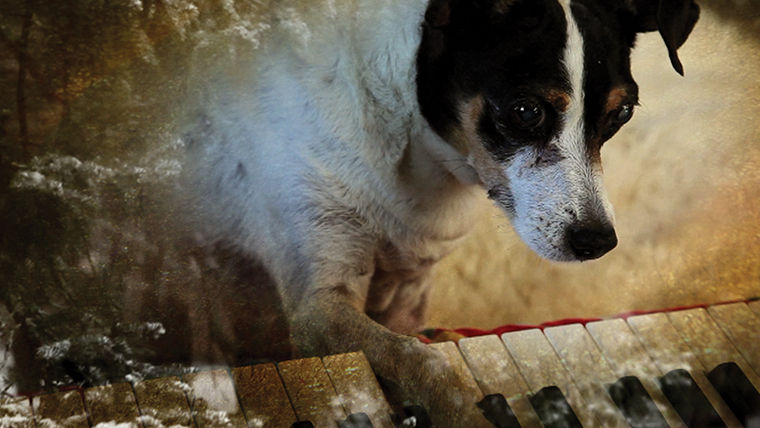Experimental artist Laurie Anderson discusses new film ‘Heart of a Dog’
Lolabelle, Anderson’s dog and protagonist in the film, is seen playing the piano on the movie poster.
November 9, 2015
Creative pioneer Laurie Anderson is primarily known as a musician but is also a storyteller and movie director, drawing praise from the New York Times for her new film “Heart of a Dog,” released Oct. 21. Born and raised in Glen Ellyn, Illinois, outside of Chicago, Anderson began her musical journey in 1981 with the song “O Superman,” which topped the U.K. Singles Chart and then appeared on her debut album, Big Science.
Anderson directed and composed the score for her 1986 feature length film “Home of the Brave,” a concert film featuring live songs debuted during her first world tour. Other popular works include her book “Stories from the Nerve Bible” (1995) and “Songs and Stories for Moby Dick,” a multimedia performance based on the book by Herman Melville.
“Heart of a Dog” is Anderson’s latest documentary work, created through personal essays about her rat terrier dog Lolabelle. The film mixes childhood memories and video diaries of other artists that inspire her. The film is showing at film festivals and theaters across the country and will premiere Nov. 13 at Chicago’s Music Box Theatre, 3733 N. Southport Ave. It is dedicated to her late husband Lou Reed, the rock pioneer, who died in 2013.
The Chronicle spoke with Anderson about “Heart of a Dog,” her inspirations and the unexpected direction the film has taken.
THE CHRONICLE: What inspired the film?
LAURIE ANDERSON: Originally, I thought I’d just grab some dog stories, [but] then I started thinking about empathy, blindness and how we tell stories. It’s really a collection of short stories. Many of them—on the surface—are about people and the NSA and friends, but underneath they are about why you tell stories and what happens when you tell them too often, or what happens when you forget them. They begin to shape you in a weird way. [“Heart of a Dog”] is about how words can shape the world [around you].
How would you describe the film’s style?
It is a lot of layers. I use a lot of filters. Violin is my instrument and when you are playing the violin, it is a very different sound than what the audience hears. You are hearing the crunches and cracks and overtones and harmonics—really beautiful sounds that disappear by the time they slip out into the hall. I make a lot of filters that bring that off of the noise floor and make it very gritty. I do the same thing with the visuals. For example, the animations in the beginning of the film—I wanted them to look like an old comic book, so really raggy. It has a more organic feel and less pristine, digital stuff. It’s very homemade. [The film] asks you to see through a lot of different ways, so you see from the dog’s perspective, then cut to the lens of a surveillance camera. It is a demanding film, and in a funny way, almost a radio play— So many things talked about but you never see. It is also coming out as a soundtrack record. It works quite well without any pictures.
“Learn how to feel sad without being sad” is a quote from the film. What does it mean to you and did Lolabelle help?
The world helps you in that regard. That was [said by] my meditation teacher. There are a lot of sad things in the world but if you try to push them away, they will come back and bite you. His ideas were, “Don’t ignore them, but don’t become them.” That was a really crucial point I tried to keep in line in the movie, even though there are a lot of things that are quite sad in it. I am trying not to make it a sad experience—it is more of a discovery. It is made up of questions but no answers.
How does “Heart of a Dog” compare to your other work?
It has a lot to do with my past work in the sense that it is analyzing what stories are. There’s probably more personal stuff in this one so that was more vulnerable. I didn’t expect it to get past an art channel. The fact that it is going in all of these places, going to be on HBO is not what I had thought of for this project. So, it’s an odd one for me. The other films I have done have been bigger budgets and this one was haphazard and homemade, so it has been really interesting to see that it’s going this other direction.








